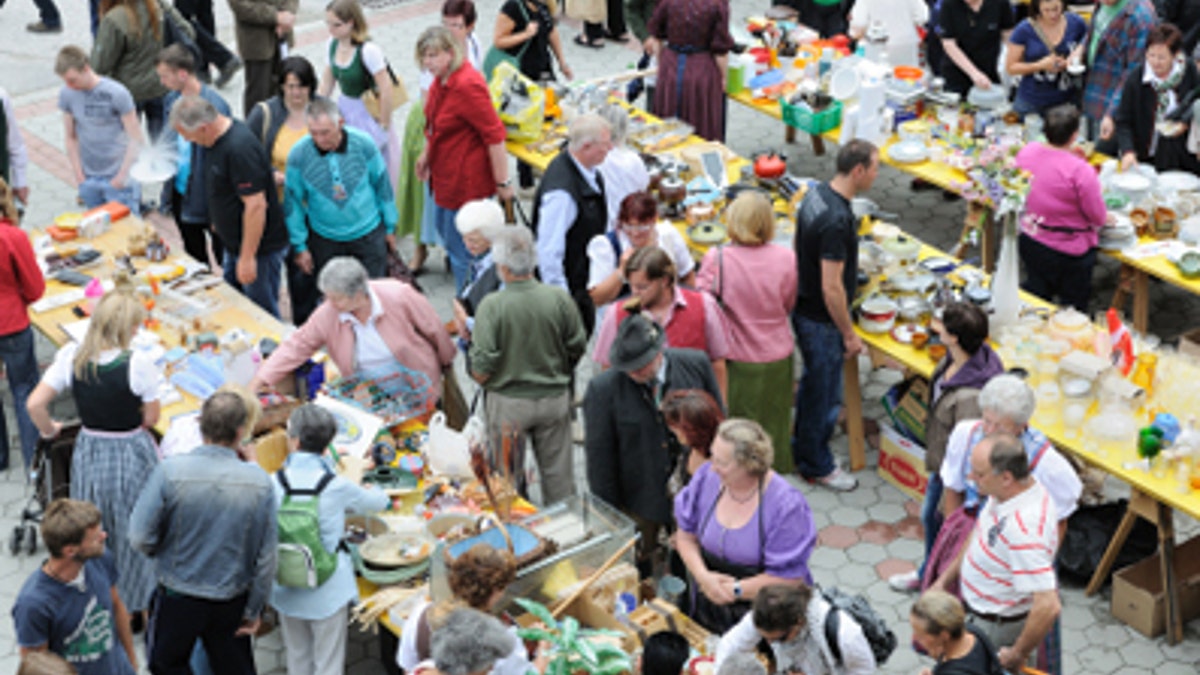
Flea marketing looks so easy in magazine spreads and TV shows: You see a host waft around an organized array of tables overflowing with conveniently bargain-priced antiques. It's always a beautiful day, it always takes about five minutes to find treasures and the seller is always willing to negotiate price. And there's always somebody with an old-timey truck with a Golden Retriever sitting in the back. Accessorized with a bandana.
The reality, of course, is nothing like this. Even at the most preciously curated markets, there are always the few rogue sellers hawking tube socks. The "destination markets" that everyone knows about in your area consist of nothing but overpriced junk. And there's rarely any organization to the market.
It's time to surrender the fantasy of gorgeously distressed vintage trucks (along with the Golden Retrievers) and get down to (tarnished) brass tacks: Flea markets are tricky places to shop. But if you know a few tips, you CAN walk away with something amazing for a great price. Really.
First, know the difference between a "destination" flea market and a community market. Destination flea markets are really anything that ends up featured in a magazine or TV show. Think Brimfield (in Massachusetts), the Golden Nugget (NJ), etc. Or, are widely-known in your area. While there is some comfort in attending a place filled with curated goods from pro retailers, you'll pay dearly for the experience—literally. Community markets are less renowned but will be the place where people just happen to unload treasures.
At a "Destination" market? Know what the specialty is. And then look for everything but that. At Brimfield, furniture and accessories reign supreme. I can tell you that, unless you have thousands to spend, you'll often pay above-retail prices for things…and then have to compete alongside buying teams from major retailers. Who are often dressed like suspiciously well-put-together WWI flight pilots and have wads of corporate cash. Instead, I looked out for vintage clothes…and walked away with 10 dresses, jackets and cashmere sweaters (all in pristine condition) for under $200.
Know what's trendy, now. Look through magazines and catalogues for patterns. This year, vintage signs are a hot commodity and therefore command inflated prices. Don't go near them. Midcentury modern furnishings are on the wane, so those prices are falling a bit.
Don't try to negotiate..unless you follow this rule. For many merchants, the market circuit is their sole way of earning cash. To negotiate is to insult, especially if you're buying a handmade item. ONE exception: If you're buying 3 items or more.
Don't go too early, if you're on a budget. Early birds often get the best merchandise, but the highest prices. This is because merchants know that someone will be around later in the day to buy, so there's no pressure to make the sale. And if you're at a craft market, you'll have the uncomfortable experience of every merchant trying to catch your eye.
Don't show up at the end of the day. It used to be that you could catch a merchant at the advertised end of the day, and they would give you dirt-cheap prices for goods (so they wouldn't have to pack it up). Now, you'll just find a deserted lot. Many merchants leave 2 hours before closing.
Go directly to the center and back of the market. Stalls near the front of the market command higher prices, which means that only the higher-end merchants will end up there. Those near the back are less-trafficked (read: less competition) and are more likely to be mom-and-pop operations with a diverse selection of goods for lower prices.
Carry cash, especially small bills. You'd be surprised at the number of people who try to buy a5 item with a100 bill. This is silly. No merchant will want to make change for big bills. Plus, many merchants will give you a better deal if you have smaller bills (which are always in short supply).
Bring a bag or a cart. This is less a shopping strategy but one that will make the experience more comfortable. I can't tell you how many times I've forgotten this. And another word to the wise: If you're looking to buy glassware, Pyrex or china, bring your own tissue paper.
More from Stylist:
An incredible runner...made from toilet paper rolls